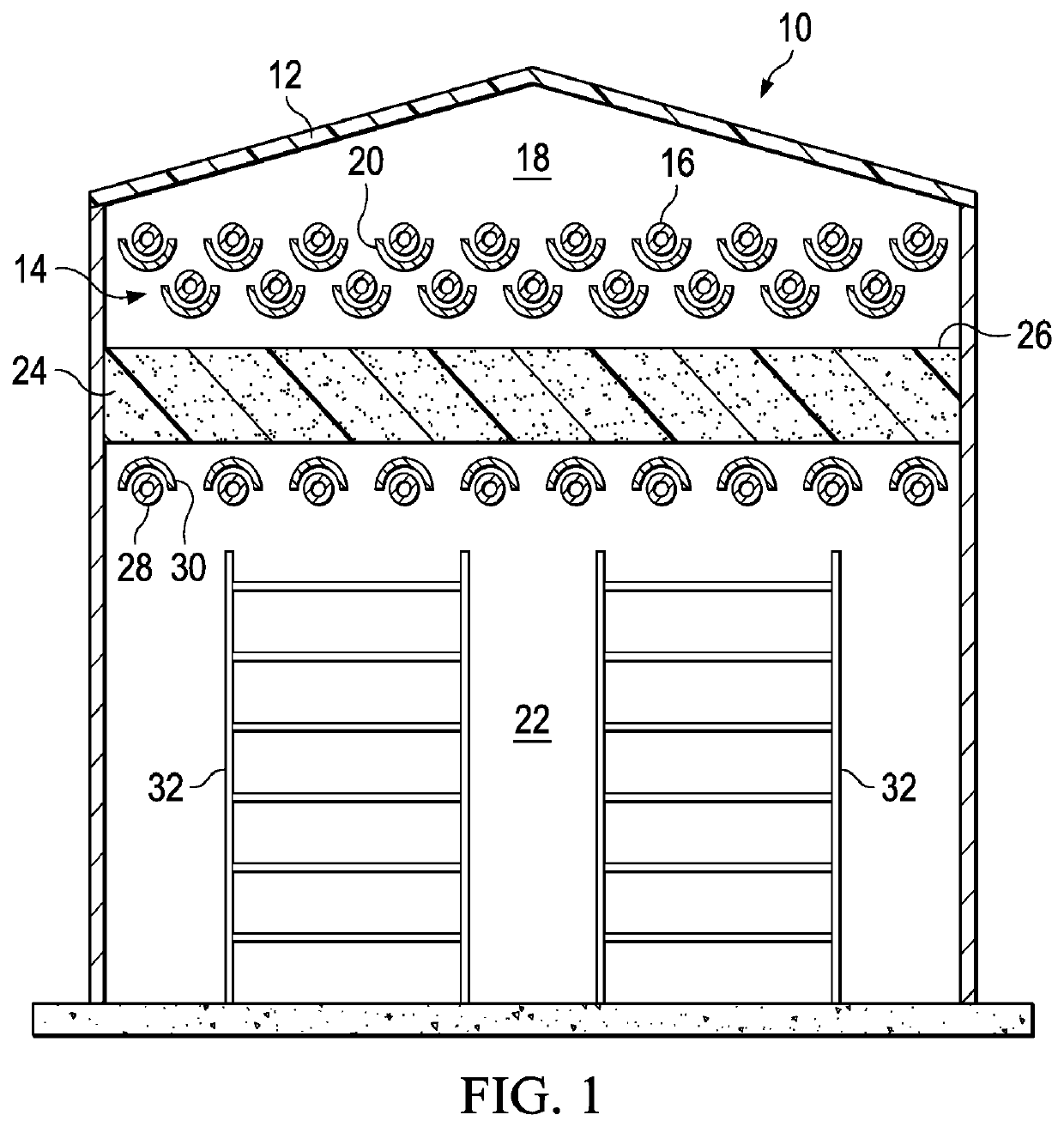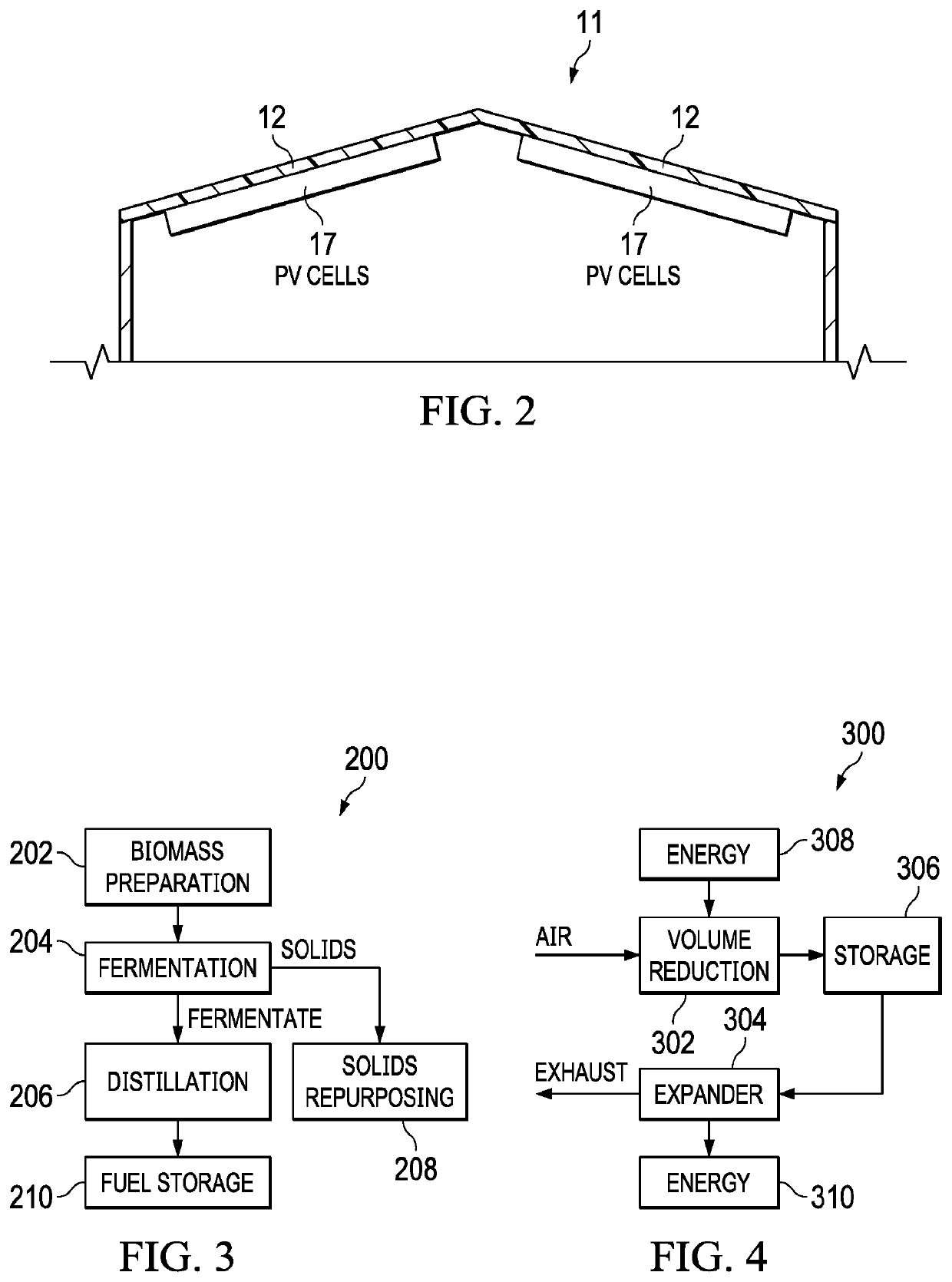Sustainable energy production
a technology of energy production and sustainable energy, applied in the direction of greenhouse gas reduction, thermal-pv hybrid energy generation, lighting and heating apparatus, etc., can solve the problems of little to no human intervention opportunity, difficult to challenge the increase of atmospheric carbon dioxide and the increase of carbon dioxide into the ocean, etc., to reduce instantaneous energy deficiencies in the system
- Summary
- Abstract
- Description
- Claims
- Application Information
AI Technical Summary
Benefits of technology
Problems solved by technology
Method used
Image
Examples
embodiment 10
[0026]FIG. 1 illustrates schematically how a solar thermal application can be used to reduce electricity or natural gas usage. In the embodiment 10, a transparent or translucent roof 12 is used instead of a typical opaque roof. By doing this, the solar thermal apparatus 14, depicted as a series of tubes 16, is located inside the housing, in an attic space 18 in the depicted embodiment. This eliminates the need to be outside on a roof surface. In this embodiment, an appropriate heat transfer liquid (water being a good example) passes through the tubes 16 that are located in an attic space 18, acquiring heat in the process. An optional set of reflectors 20 is shown below each of the tubes 16. In a preferred embodiment, these reflectors 20 are mechanized to track the movement of the sun. The attic space 18 is separated from an inhabitable space 22 by an insulative layer 24. In addition to, or possibly instead of, the surface 26 that faces into the attic space 18 may be coated with a re...
embodiment 11
[0028]In another embodiment 11, as depicted in FIG. 2, a series of photovoltaic panels 17 are deployed, preferably immediately below and parallel to the roof surface 12. In this embodiment 11, the electricity produced in the photovoltaic panels 17 substitutes for electricity that would otherwise be drawn from the overall electrical grid.
[0029]These hybrid approaches to renewable energy are available in the middle latitudes of the United States and may be extendable to other geographical areas with similar seasonal climates through the deployment of the invention, a hybrid clean energy unit. From April through November, a solar thermal array can be configured at a residence or at an electricity generation facility. The array can be arranged similarly to those already in use, with the solar energy being used to preheat and / or boil water prior to being sent to a boiler, among other uses, reducing the need for fuel. In preferred embodiments, the solar collection would be by way of parab...
PUM
| Property | Measurement | Unit |
|---|---|---|
| energy | aaaaa | aaaaa |
| time | aaaaa | aaaaa |
| energy | aaaaa | aaaaa |
Abstract
Description
Claims
Application Information
 Login to View More
Login to View More - R&D
- Intellectual Property
- Life Sciences
- Materials
- Tech Scout
- Unparalleled Data Quality
- Higher Quality Content
- 60% Fewer Hallucinations
Browse by: Latest US Patents, China's latest patents, Technical Efficacy Thesaurus, Application Domain, Technology Topic, Popular Technical Reports.
© 2025 PatSnap. All rights reserved.Legal|Privacy policy|Modern Slavery Act Transparency Statement|Sitemap|About US| Contact US: help@patsnap.com


